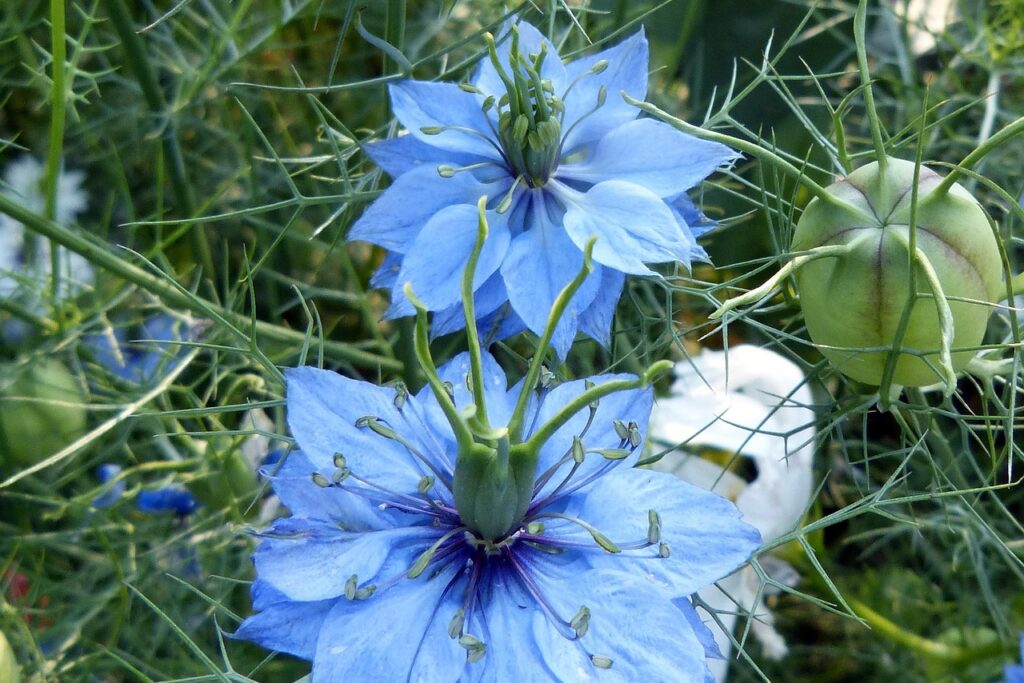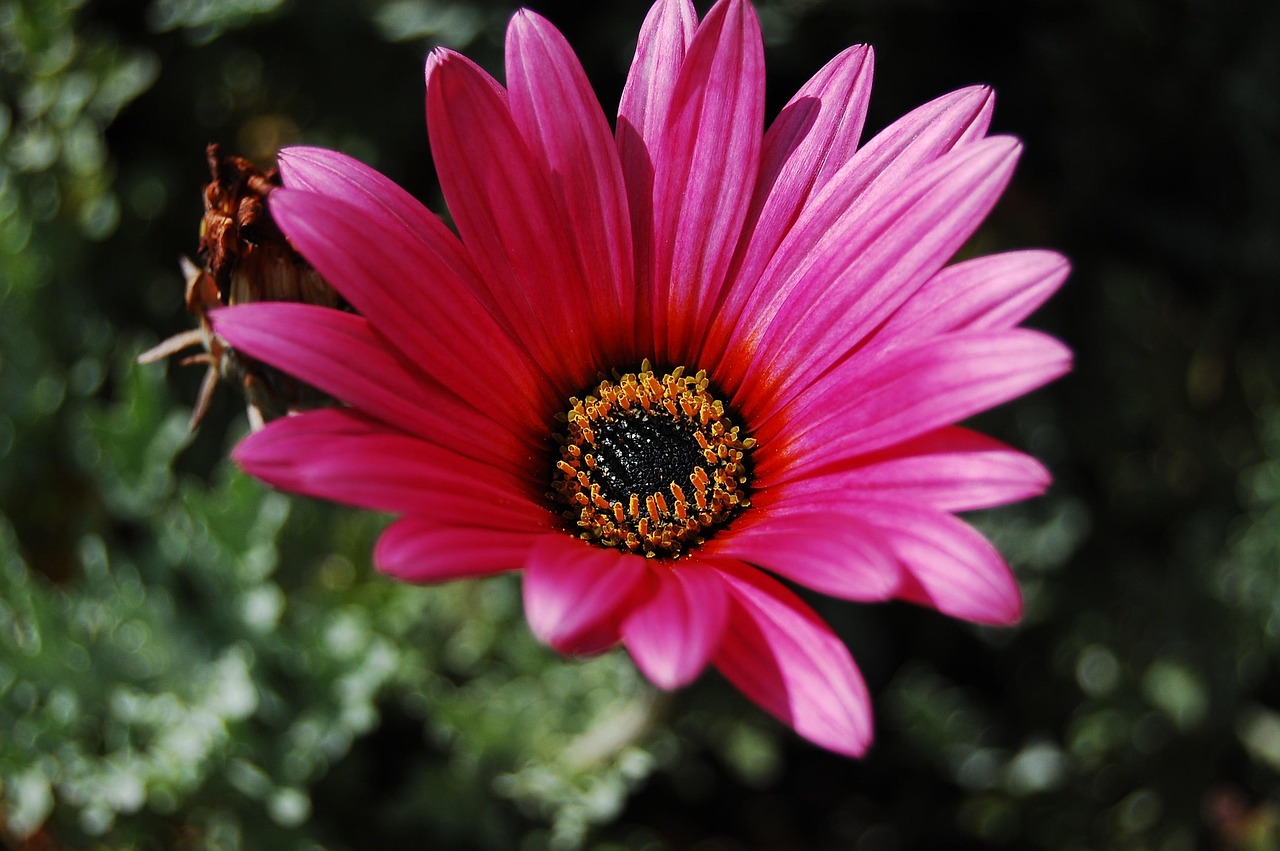Nigella | A Mysterious Flower Wrapped in Thread-Like Leaves

Nigella is an annual plant admired for its delicate blue blossoms and fine, thread-like leaves, often used as an accent in garden design.
Also known as “Love-in-a-Mist” or “Devil-in-a-Bush,” this flower carries a unique beauty and a mysterious atmosphere.
In this article, I will present the essential information about Nigella, its cultural background, and key points for cultivation.
Basic Information
- Scientific name: Nigella damascena
- Family: Ranunculaceae
- Origin: Mediterranean region, Southern Europe
- Appearance: Nigella produces pale blue, white, or purple flowers, surrounded by finely divided leaves that resemble lace. Its seed pods also have ornamental value and are popular as dried flowers. The plant grows to a height of about 30–50 cm, suitable for both gardens and pots.
- Blooming season: From spring to early summer (May–June). The flowering period is short, but the blossoms are strikingly beautiful.
Cultural Significance Worldwide

Nigella is cherished in Europe, particularly under the names “Love-in-a-Mist” and “Devil-in-a-Bush.” It is valued as a garden plant and for cut flowers, as well as for dried arrangements in the United Kingdom and France.
The flower language associated with Nigella includes meanings such as “Love in a dream” and “Difficulty,” reflecting its fragile appearance.
In the Middle East and Mediterranean regions, Nigella seeds are known as “black cumin” and have been used since ancient times as both a spice and a medicinal remedy. Although Nigella sativa is more commonly used for culinary purposes, the resemblance in appearance and flavor has led to the use of both species in cooking.
Historical Episodes
Nigella held importance in ancient Egypt, with seeds discovered in the tomb of King Tutankhamun. This suggests that Nigella was long regarded as a symbol of protection and health.
In the Arabian Peninsula, it has been called the “miracle seed,” still used today for health and in traditional medicine.
In Europe, Nigella became popular in Victorian garden culture, where its lace-like foliage and delicate flowers were highly valued. In British gardens, it was especially appreciated for its refined design.
Gardening Advice

Nigella prefers sunny, well-ventilated locations and is a relatively easy annual to grow. When sown in spring, it blooms beautifully in early summer, making it ideal even for beginners.
It thrives in sandy, well-drained soil and should not be overwatered. Whether grown in the ground or in pots, Nigella develops best when kept slightly dry. Watering is only necessary when the soil surface dries, and frequent watering is unnecessary.
Fertilizer is generally not required, but a small amount of phosphate-based fertilizer can enhance flowering.
After flowering, Nigella produces seed pods. If left in place, they often self-sow the following year. The seeds can also be enjoyed as dried flowers.
Conclusion
Nigella, with its delicate foliage and beautiful flowers, gracefully decorates any garden.
It is easy to cultivate, versatile, and can be enjoyed as both a living plant and a dried flower, making it a wonderful addition to any garden or balcony.
I invite you to experience the charm of Nigella’s blossoms and unique seed pods in your own space.





